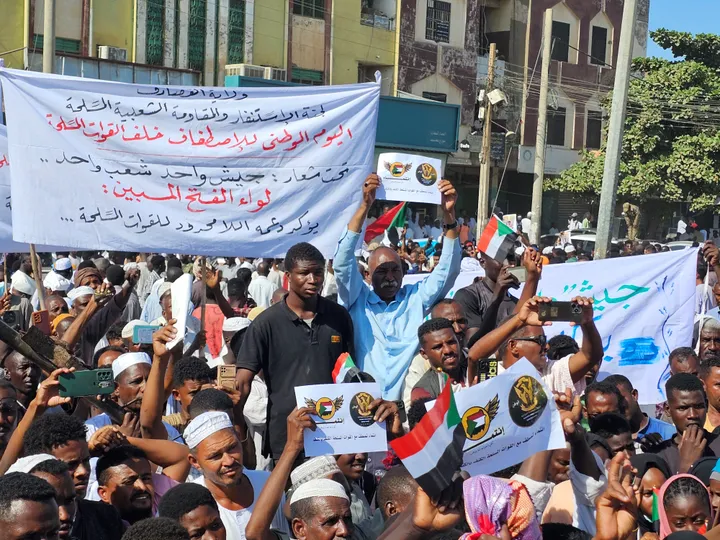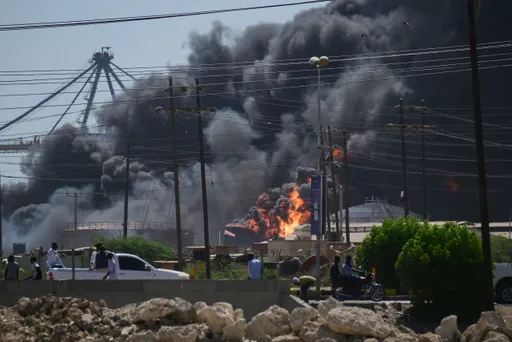By Mazhun Idris
As Winnie John recounts her evening ritual of lighting a kerosene-fuelled hurricane lantern in a tranquil rural neighbourhood of Kenya's Machakos County, it’s almost as if one is transported to a different world.
The flickering flame inside the glass chimney casts a warm glow across her room, banishing the darkness of the night. Any hint of romanticism Winnie's description might invoke ends here.
"We were aware of the risks associated with using paraffin lamps but didn't have a choice," she tells TRT Afrika, referring to the sooty fumes that the lantern would emit through its tiny ventilation, polluting the indoor air through the night.
These paraffin or kerosene lanterns posed various health hazards, and the fumes lingered as permanent stains on the walls of homes across the hinterland without electricity.
The International Energy Agency reports that in Africa, "600 million people, or 43% of the total population, lack access to electricity, most of them in sub-Saharan Africa".
Not too long ago, in Kenya, users of paraffin fuel had to do with adulterated kerosene, often diluted with diesel. This adulteration not only increased health and safety risks but also contributed to the emission of greenhouse gases.
A crackdown came soon enough, but it didn't go as intended. "The authorities decided to combat fuel contamination by bringing parity in the pump prices of the two fuels, ending up burdening us with higher expenses," rues Winnie.
The homemaker and mother usually placed a single paraffin lantern with a retrofitted tank that needed refilling in her living room. The illumination was hardly adequate as most portions of the home would remain enveloped in darkness.
High paraffin costs and uneven lighting led Winnie to explore durable and eco-friendly solar-powered lamps distributed by a Kenyan tech company that also offers loans to buy household items.
The comprehensive solar home solution includes multiple interconnected light sources, an FM radio, and a phone recharging facility. A built-in mobile payment system completes the package.
Essential lighting
Light is life, serving as the lens through which humans perceive and understand the world. From education to transportation, nothing in the modern age would function without it.
Despite efforts to expand rural electrification to boost energy access in many African countries, many rural areas and even suburban towns remain predominantly off-grid. Those with electricity face load-shedding, which could stretch for hours and days.
Alternative sources of light powered by paraffin and kerosene are a Catch-22 for the vast majority of such populations.
As a World Bank study puts it, fumes from kerosene lamps are akin to smoking two packs of cigarettes a day, impairing lung function and increasing the likelihood of asthma in children.
Burning kerosene also emits pollutants like carbon dioxide, nitrogen dioxide, and sulphur dioxide, all of which are counted among the prime drivers of climate change. There is also the constant risk of burns and fires associated with routine use of such lamps.
As the transition to modern lighting progressively reaches more communities across African villages and towns, the once-ubiquitous kerosene lamp is gradually disappearing from households and other places.
People without uninterrupted access to electricity instead use lanterns powered by disposable or rechargeable batteries and, in some cases, solar power.
Today, most electric lamps are fitted with LEDs, or light-emitting diodes, which are way more efficient and less energy-consuming than incandescent bulbs and halogen lights.
LED light bulbs are made with durable plastic, making them less breakable than conventional incandescent bulbs or fluorescent tubes made of glass.
High-quality LED lamps have a 50 times longer lifecycle than other lighting alternatives and require even lower maintenance.
They are bright, easy to install, and convenient for indoor use. They are also easy to use or carry and come in various forms, such as keychain flashlights, cable-less portable work lanterns, detachable, extendable, and mountable with built-in hooks or hangers.
Market transition
A study published by Science Direct seven years ago, which systematically assessed lighting usage patterns in seven Sub-Saharan African countries, confirmed that a transition "has taken place in recent years".
The study found that "the rural population without electricity in Africa has replaced kerosene lights and candles with simple, yet more efficient and cleaner LED lamps powered by non-rechargeable batteries".
The shift has meant that kerosene has been almost entirely replaced with energy-efficient alternatives even in many rural areas.
A report by the market research firm Mordor Intelligence projects that the size of the African LED lighting market will reach US $5.94 billion by 2029, up from $4.01 billion in 2024.
The ongoing energy transition in parts of Africa that still lack electricity is seen as an insight into how adoption of technologies is changing lives across the continent.
➤ Click here to follow our WhatsApp channel for more stories.
























